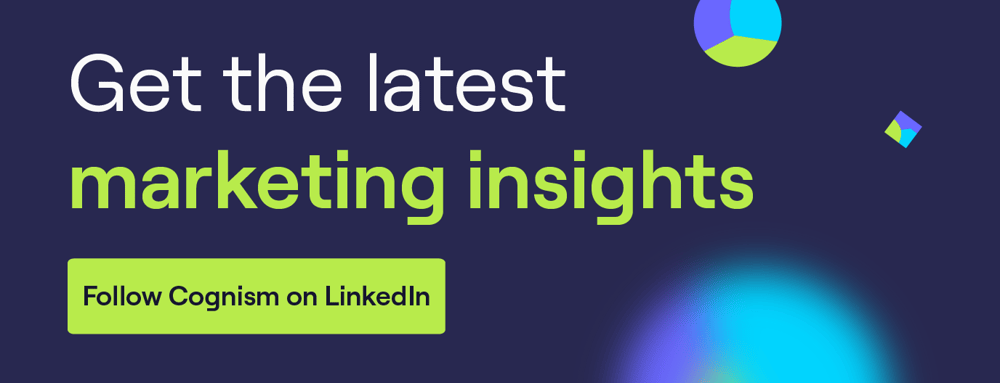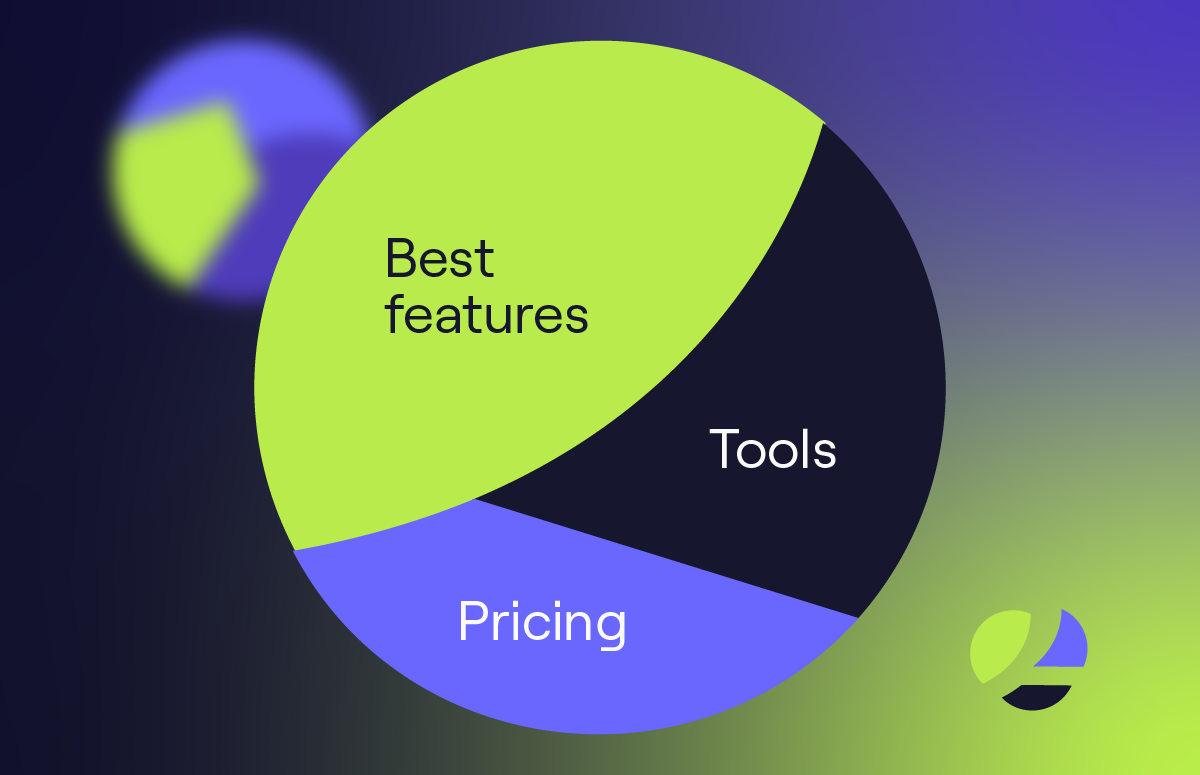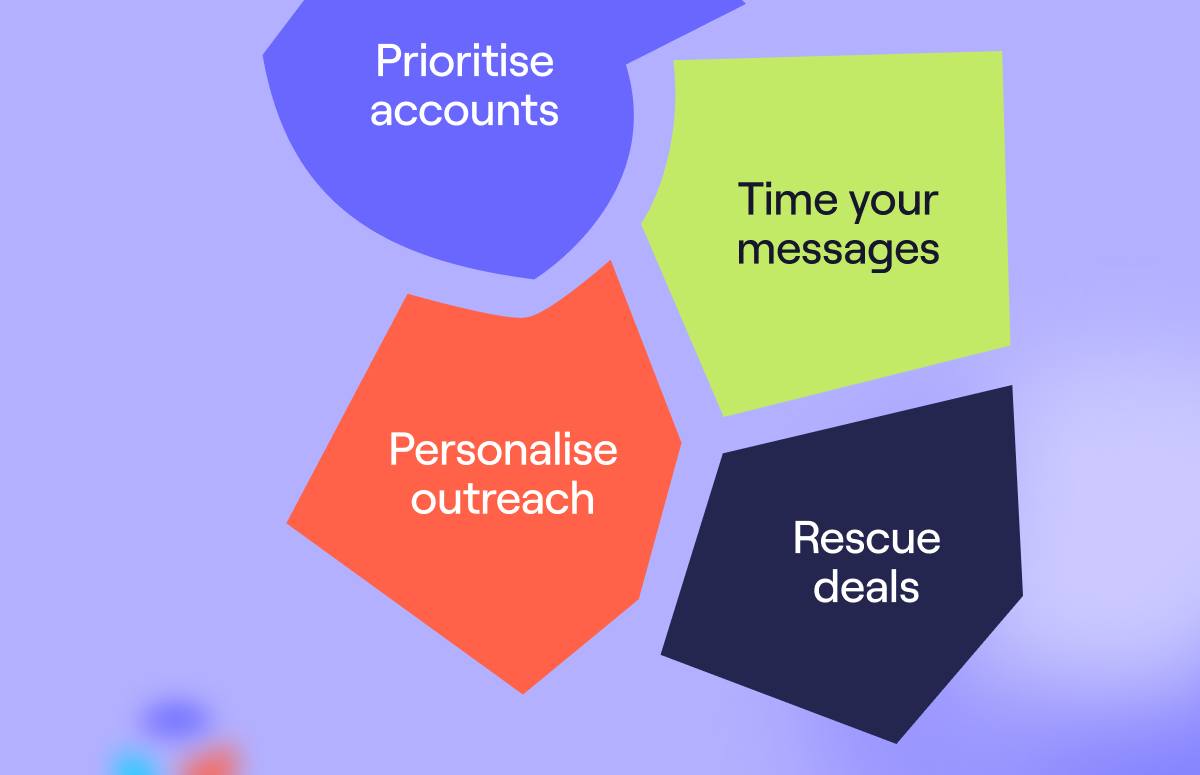How to Generate Leads from Facebook: 9 Proven Strategies
Tips for improving your Facebook ads:
In the ever-evolving digital marketing landscape, mastering how to generate leads from Facebook can set a business apart.
Don’t believe us?
Canberk Beker, former Head of Paid at Cognism, has achieved some mind-blowing results. With a modest 5% increase in Facebook investment, he generated a 500% increase in sales pipeline.
This blog will guide you through the blueprint behind Canberk’s success. Elis Tunaboylu, Campaign Manager at Cognism, will offer a broader perspective on Facebook’s lead generation prowess.
It’s time to unlock Facebook’s full potential for lead generation!
Let’s get started 👇
Understanding Facebook ads in B2B
It’s important to note the distinct nature of Facebook as an advertising channel.
Canberk explained:
“Facebook is a truly unique channel. You might end up hitting 50% salespeople, but you don’t know what the other 50% does.”
The truth is that the targeting mechanism on Facebook doesn’t operate like it does on LinkedIn.
Facebook’s platform doesn’t allow for targeting by job titles as LinkedIn does, but it allows you to narrow audiences based on interests. This distinction is crucial for B2B marketers. We’ll delve into this in more detail later!
Canberk also stressed the importance of channel intent in B2B marketing strategies. He told us:
“The most important thing to think about is channel intent. Sometimes, marketers forget about the intent piece and treat every channel the same. The biggest mistake we made was to treat Facebook like LinkedIn.”
You can’t approach all social platforms with the same strategy!
Elis added:
“With LinkedIn campaigns, we aim to convert during the business period of our audience’s day, but with Facebook, we aim to convert our audience during their leisure time.”
Canberk echoed this:
“When you’re on Facebook or Instagram, you don’t do anything related to work. You don’t go there for your professional life!”
Therefore, when creating a Facebook lead ad, it’s essential to tailor the content to fit the casual and personal nature of the platform.
The anatomy of effective Facebook ads
Effective Facebook ads are engaging ads; fun and simplicity are crucial ingredients.
Canberk described his approach:
“We simplified everything we had on LinkedIn and implemented them for Facebook and Instagram. Which meant that we used funny stuff, lots of play on words.”
In social media’s fast-paced, scroll-happy world, your ads must grab attention quickly and effectively. They should be like a catchy song - easy to remember!
Remember that you can deliver Facebook ads on both Facebook and Instagram, thanks to Meta’s integrated Ads Manager. This allows you to test which platform provides the best results - it’s a whole world of possibility!
Real-life success story
Let’s start our deep dive into Facebook advertising with a success story. Canberk’s team achieved something so extraordinary it’s worth saying twice.
By upping their Facebook spend by just 5%, they boosted pipeline by 500%.
This story is more than impressive; it’s a practical example of how to generate leads from Facebook with a clever strategy.
Let’s look at the factors that led to its success.
Rethinking campaign goals
It all started with a shift in their campaign focus. Canberk realised that Facebook’s audience would never be as large as LinkedIn’s, so he changed their campaign goal from reach to conversions.
Canberk explained:
“Even though the demand generation mindset is about expanding your reach as much as possible, if you’re already reaching your audience with the right amount of frequency, there’s no harm in changing the campaign objectives from reach to conversions.”
Thoughtful approach to ad frequency
Canberk also tackled the issue of ad frequency. With a smaller audience on Facebook, ads show up more often. But instead of seeing this as a problem, he used it to his advantage.
Here’s how:
By analysing how different ads performed at various frequencies, Canberk found the sweet spot for each type of ad.
Canberk added:
“After analysing the relationship between the frequency and revenue on the campaign level, we noticed different patterns in different types of campaigns.”
“For instance, X amount of frequency might cause ad fatigue in the social proof ads, but not in the product value ads.”
Content that clicks
Canberk’s team tailored content for Facebook and Instagram’s unique audience - including a less “professional” tone.
They tweaked their top-performing LinkedIn ads - shorter videos, snappier headlines, and vertical formats. This meant their ads resonated more with the Facebook crowd.
Keep these concepts in mind as we move onto our Facebook ads blueprint. They can lead to big wins!
Step-by-step: creating Facebook ads
As we turn to the nuts and bolts of how to generate leads from Facebook, let’s take a leaf out of Canberk and Elis’s book. Their experience offers a precise roadmap for leveraging Facebook for business growth.
1. Establish a solid audience base
The first step is building a foundation with a solid audience base. Start by gathering a list of contacts, emails, or a target group you’ve previously engaged with.
Canberk elaborated:
“We exported a list of contacts of our ICP from Cognism, then added them to Metadata.”
“Metadata is a platform which helps us to send the customer list to Facebook.”
Remember how you can’t target specific job titles on Facebook - this is the workaround!
This tactic allows you to reach a targeted and relevant audience using Facebook advertising.
2. Use Facebook’s lookalike audience feature
Next, tap into the power of Facebook’s lookalike audience feature.
This tool allows you to use your initial audience as a base to find many more people who share the same characteristics. It acts as an audience magnifier, expanding your reach whilst maintaining relevance.
Canberk noted:
“If you choose a 100% lookalike audience, It goes up to 6 million people. Normally, 100% means finding the most relevant people - on Facebook, it’s the opposite. 1% is the closest people!”
By choosing a 1% similarity percentage, Canberk identified a highly relevant audience of about 1.5 million.
3. Use interest targeting
Finally, interest targeting can refine your audience even further. This step is crucial for tailoring your Facebook lead gen ads to the right group.
Canberk explained:
“We used lookalike audiences combined with Facebook’s filters. For example, we narrowed our lookalike audience down with the interest filters ‘lead generation’ and ‘digital marketing’.”
This approach resulted in a refined audience of 500,000 people, illustrating the level of precision you can achieve.
Elis added:
“Filters hyper-segment the lookalike audience, so we can hit our target directly and use budget more effectively.”
Elis’s point here is about getting the most out of your ad spend. By using filters to refine your audience, you’re not just casting a wide net - you’re zeroing in on the people most likely to respond. It’s a smarter way to target, ensuring your ads get in front of the right eyes without wasting resources.
4. Launch campaigns for the identified audience
Once you’ve identified your audience, the next step is launching marketing campaigns that offer value. For example, Canberk promoted our “free leads” initiative and “ROI calculator”.
But that’s not all; Canberk tested a hypothesis:
“If Facebook’s algorithm is that strong, it will be able to find really close people. Instead of running a demand generation campaign, I could start with demand capture.”
“We targeted the lookalike audience with demo campaigns. It worked! At that point, Facebook became a lead generation channel.”
This approach pivots from traditional demand generation to capturing existing demand, making Facebook a potent tool in your marketing arsenal.
5. Track metrics
Use Facebook Ads Manager to keep a close eye on conversions, engagement rate, and other crucial metrics. Understanding the entire conversion journey, including re-targeting efforts, is vital.
And there’s another instrumental B2B marketing tool in Canberk’s arsenal - HockeyStack.
How does it work?
It tracks the fingerprint ID of users, giving you a clearer understanding of the user journey. This kind of monitoring allows for a more nuanced approach to your Facebook lead generation strategy.
6. Optimise for multiple platforms
Remember that your ads might appear across different devices and platforms. It’s crucial to know where your audience is!
For instance, if a significant portion is from desktop, you should focus more on Facebook since Instagram is predominantly mobile. Analyse where you’re getting better conversions or engagement, whether from Facebook or Instagram and tailor your strategy accordingly.
7. Test ad placements
Testing multiple ad placements is crucial in identifying the best-performing ones. Not all placements yield the same results. For example, Facebook Messenger might be less effective than Instagram reels or stories.
Canberk’s experience reflects this: some placements worked better than others, reinforcing the need for continuous testing and adaptation.
8. Prioritise engagement metrics
In the world of Facebook ads, engagement is king. While likes and comments are the more visible markers of engagement, other B2B marketing metrics like saves, shares, and pauses on Stories also play a crucial role in indicating audience interest.
In lead generation Facebook ads, high engagement often leads to better conversion rates. It’s because engaged users are more likely to take the leap from just viewing your ad to visiting your website or taking the desired action. This step is vital in understanding how to generate leads from Facebook effectively.
9. Adjust budgets and understand Facebook’s learning phase
Managing your budget wisely is a critical part of Facebook advertising. If you’re working with a monthly budget, start with a smaller daily allocation. This approach allows Facebook’s algorithm time to learn and optimise your ad performance.
Think of the first week of your Facebook ad campaign as a crucial settling-in period. During this time, resist the urge to tweak or change things. Facebook uses this time to gather data and improve your ads. Embracing this learning phase lays a solid foundation for the success of your lead generation efforts.



